Gluten Free Italy: A Complete Guide for Traveling Celiacs
What’s the first thing you think of when you picture Italian food? If you’re like me, it’s probably going to have something to do with either pizza or pasta.
Neither of which are particularly easy to find prepared safely for Celiacs, at least at home (for us) in the United States.
However, in Italy, you can find Celiac-safe pizza, pasta, tiramisu, focaccia, and everything in between. It’s counterintuitive, but because of a combination of factors (which we’ll get into in a second), Italy is actually paradise for gluten free foodies because you have ample opportunity to experience the local food.
Unlike, say, France, where it is nearly impossible to experience the local food culture because they put flour in EVERYTHING and aren’t always willing to make substitutions, Italy is incredibly inclusive when it comes to its gluten free options.
It’s not uncommon to sit down at a restaurant accredited by the Italian Celiac Association and be told that you can order everything on the menu (sometimes there are a few exceptions).
Alysha and I, Matt (the Celiac in the duo) have spent a combined eight weeks in Italy over the past two years, ranging from the southwestern tip of Sicily to Milan in northern Italy, and have found the gluten free options in Italy to be far easier to find, accommodating, and delicious than just about any country on earth.
For that reason, despite being the global capital of pizza and pasta, we’d highly, highly recommend Italy for traveling Celiacs, especially if you’re newly diagnosed.
A trip to Italy early on in your Celiac journey will help show you that it is possible to eat delicious gluten free food when you’re traveling, which I know is a hurdle that many Celiacs – including myself a decade ago – face.
Where am I going to eat? Will it be safe? Will it be just a piece of boiled chicken and broccoli?
In Italy, you’ll find plenty of safe, delicious gluten free options.
In this guide, we’re going to dive deep into three topics.
First, we’ll give our perspective and theories on why Italy is so Celiac-friendly.
Then we’ll tackle our tips for navigating Italy gluten free.
Last, we’ll go through a quick overview of our favorite gluten free restaurants and bakeries in Italy, organized by city (and with links to more guides for that destination).
Our intention here is that by the end of this guide, you’ll feel more prepared to plan your trip to Italy, and be armed with the information you need to experience Italy confidently and safely.
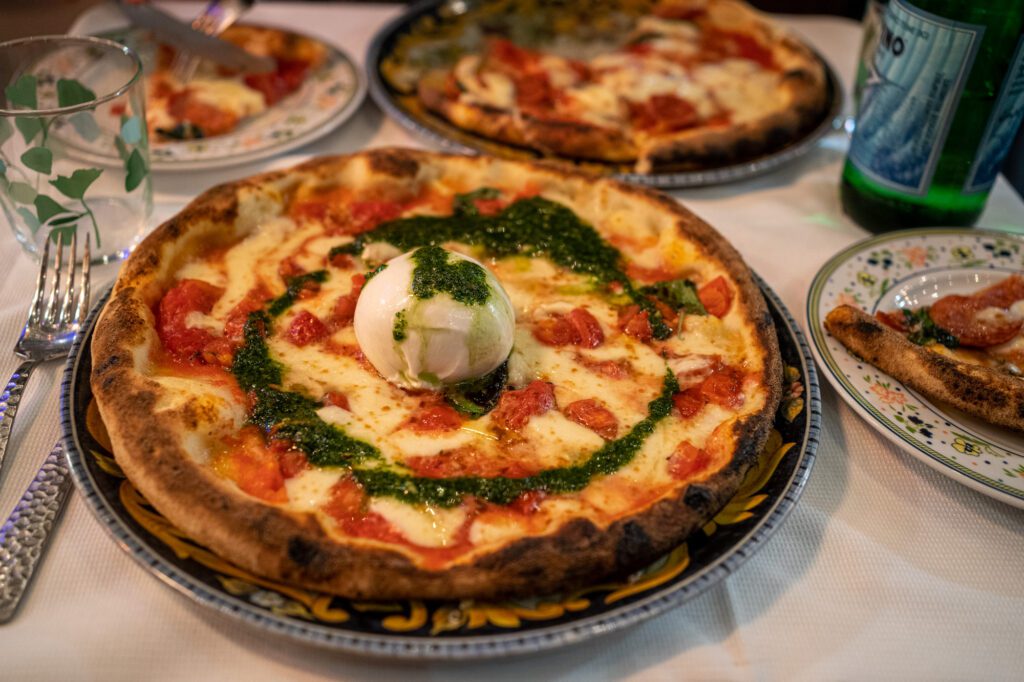

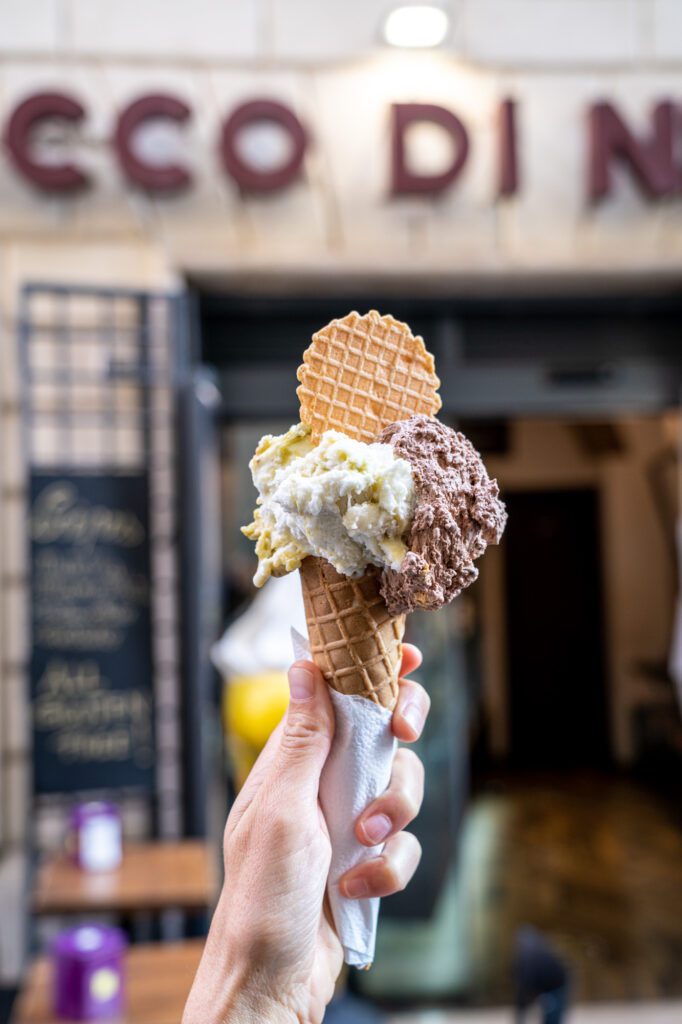
Disclaimer: Some of the links in this post, like hotel links, are affiliate links, meaning at no additional cost to you, we make a little bit of money if you click through and book. That being said, we would never recommend something to you that we don’t stand behind 100%.
Why Is Eating Gluten Free in Italy So (Relatively) Simple?
There are three reasons that we think come together to make Italy one of the easiest countries to visit for newly diagnosed Celiacs.
There Are a Lot of (Diagnosed) Celiacs in Italy
I used to think that Italy has a relatively high percentage of people who have Celiac Disease, but I recently came across some updated data showing that it’s roughly in line with the rest of Europe and the United States, hovering at about 1% of the population (including diagnosed and undiagnosed).
But 1% of a big number is still a big number.
If the percentage of Celiacs in the population is roughly the same, how, then, is my experience in Italy – where literally everyone I’ve ever said “sono Celiaco” to has understood what I mean – so different from my experience at home in the United States?
Italy is better at diagnosing Celiac Disease, and kids are often screened for it early in life (versus taking a decade to figure out that Matt had Celiac Disease in the US).
In Italy, as soon as the word Celiaco comes out of my mouth, whoever I’m talking to has known exactly what I mean (side note: this is almost certainly more true in the places we’re visiting, which are full of tourists and people in the hospitality industry).
Compare that to the United States, where I’m constantly explaining that gluten free is not the same as vegan or lactose free.
Now, I’m certain that this is less true in more rural parts of Italy with fewer tourists, but chances are that if you’re visiting Italy, you’ll probably be in those more visited places anyway.
The Italian Celiac Association (AIC) is Established and Active
For me, the factor that makes the biggest difference and makes Italy stand out has to do with the education of restaurants and other establishments.
As I mentioned above, I constantly find myself having to explain what Celiac Disease means to various waitstaff and bartenders in the United States.
It’s often confused with dairy and veganism, which is frustrating to the point where I stopped bothering to use the word “Celiac Disease” and just say “gluten allergy” sometimes.
And, to be honest, I totally get it. There are almost certainly diseases that afflict 1% of the population that I have never heard of.
But this is where the difference comes in.
The key in Italy is that there is an organization helping restaurants navigate serving Celiacs safe gluten free meals: the AIC (Associazione Italiana Celiachia).
They do a couple of things, including educating restaurants on how to serve Celiacs safely with specific processes they can implement (you’ll see things like different colored plates and markers for Celiacs at some places) and maintaining a database of accredited gluten free restaurants and bakeries around the country accessible via their app.
My hypothesis is that the presence of a trusted and helpful source – both for restaurants and Celiacs alike – is the biggest difference between the United States and Italy when it comes to the ease of dining out gluten free.
Food Plays an Important Role in Italian Culture
I think this is the main reason behind why things are so much easier in Italy.
Food is an incredibly important part of Italian culture, and one of the things we love about Italy is the diversity in food culture from region to region.
A side note to talk about my latest obsession: diversity in Italy. Italy is actually an incredibly diverse country.
Not necessarily in terms of race, which is usually what the word “diversity” means today, but each of Italy’s distinct regions has a unique approach to food and wine driven by two things.
First is the natural ingredients available to them. For example, you’ll find more seafood in southern Italy and Sicily, and more rustic ingredients like olives and wild boar in central Italy.
Second is the fact that Italy is one of the youngest countries in Europe.
Which is always a trip because when I think of the Italian peninsula, one of the first things my mind goes to is the Roman Empire.
But Italy as we know it was only unified in the 19th Century, and before that it was a series of distinct city-states, each with their own customs, traditions, and food culture.
Regardless of regional differences, though, food is a big part of Italian culture in every region, with slow meals enjoyed with wine and conversation (which usually gets better as the wine bottle empties). Every social interaction generally revolves around food (or coffee, or both), from aperitivo with friends to a business lunch.
The importance of food as a social and cultural hub combined with the fact that wheat-based foods like pasta, pizza, and bread make up a big proportion of the Italian diet means that there’s the potential for Celiacs to feel isolated and excluded.
But the reality is that the Italian government has done a great job at legislating inclusion, with provisions that require things like gluten free options in schools and a stipend for Celiacs to cover higher food costs.
Five Reasons You’ll Love Italy as a Gluten Free Traveler
Here are five reasons that Italy should be at the top of your gluten free travel bucket list.
It’s Inclusive, Not Exclusive
“You can order everything on the menu and we’ll make it gluten free.” In Rome, at places like Mama Eat and Voglia di Pizza, that’s what you’ll hear.
Not “oh, we have one main course option that is gluten free, and we have to remove the croutons.”
Literally the whole menu can be made gluten free, and in a separate kitchen in some places.
Whole separate gluten free kitchens. Different colored plates for gluten free dishes. And, in general, a MUCH higher awareness of Celiac Disease – even in tiny towns.
The fact is that while traveling gluten free in Italy, I never felt like I was missing out, like I do sometimes in the US, because I need to eat gluten free.
You Don’t Need to Bring Food From Home
One of the things I still struggle with is whether or not to bring food with me from home, just in case, and if so, how much to bring.
Over time as I’ve gotten more comfortable and confident, I’ve whittled it down to a couple of staples. But it’s still a few more things in my bag that take up precious space.
I have good news! If you’re traveling to Italy, you can feel comfortable leaving it all at home.
You’ll be able to find gluten free groceries at all the major chains in Italy, including at some pharmacies.
Access to gluten free food is higher than any other country I’ve ever been to with the exception of the US and Canada.
If you make it to Rome, make sure to check out Celiachiamo, a 100% gluten free grocery store and bakery that has a couple of different locations around the city.
The AIC App is AWESOME
AIC is the Italian Celiac Association (Associazione Italiana Celiachia), and they are a lifesaver for Celiacs in Italy.
For about $4 USD, you’ll get 15 days of full access to their app, which has a searchable, location-based database of AIC-approved restaurants.
My big tip is to click on each restaurant you’re interested in and look at the review score. I usually only add it to my list if they have more than 3.5 or 4 stars.
Is it the best app I’ve ever seen? Definitely not. Is it super useful for Celiacs looking to eat gluten free in Italy? I think so.
Find more information here.
Gluten. Free. Gelato. CONES.
When in Italy, do as the Italians do. To me, that means eating gelato AT LEAST once a day.
And across Italy, you’ll find countless gelato shops that are 100% gluten free, including the cones, so you won’t need to worry about cross-contamination.
Look for Grom across the country, and Fatamorgana in Rome.
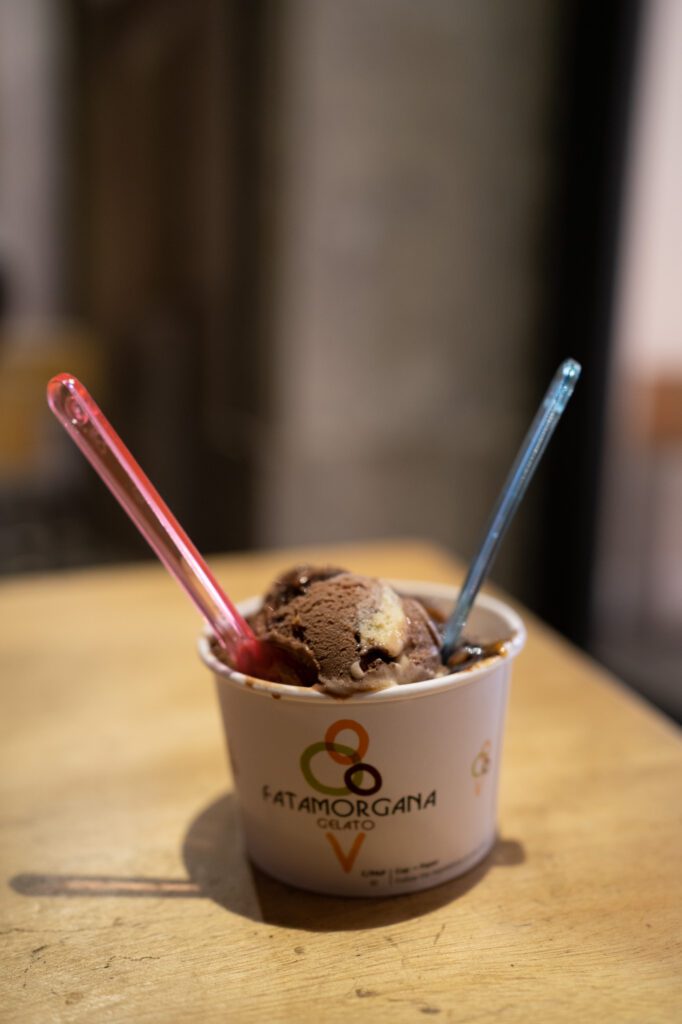
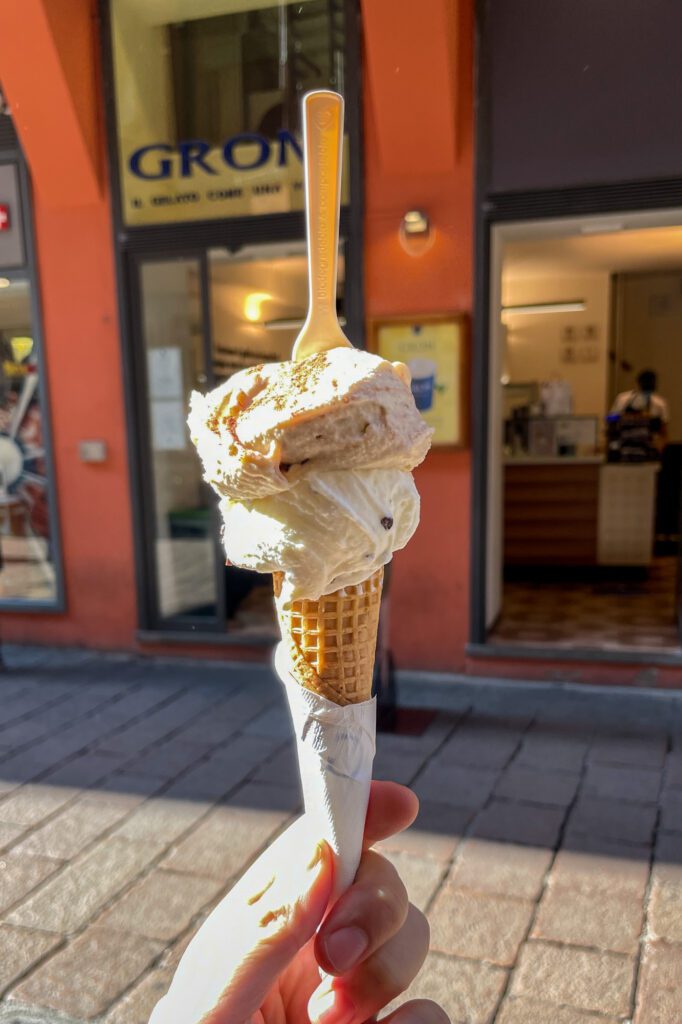
SAFE Gluten Free Pizza
One of my pet peeves is gluten free pizza that isn’t actually safe for Celiacs.
I see it all the time – a gluten free pizza crust that is sliced with a shared slicer, sauced with a shared spoon and tub of sauce, and cooked on the same surface as regular pizzas.
No thanks, I’ll pass.
But in Italy, if you find a gluten free restaurant that serves pizza AND is accredited by the AIC, you’ll find them being extra careful with cross-contamination.
Some places go as far as different colored plates and glasses so the server doesn’t get confused and accidentally serve you the wrong pizza. What a treat!
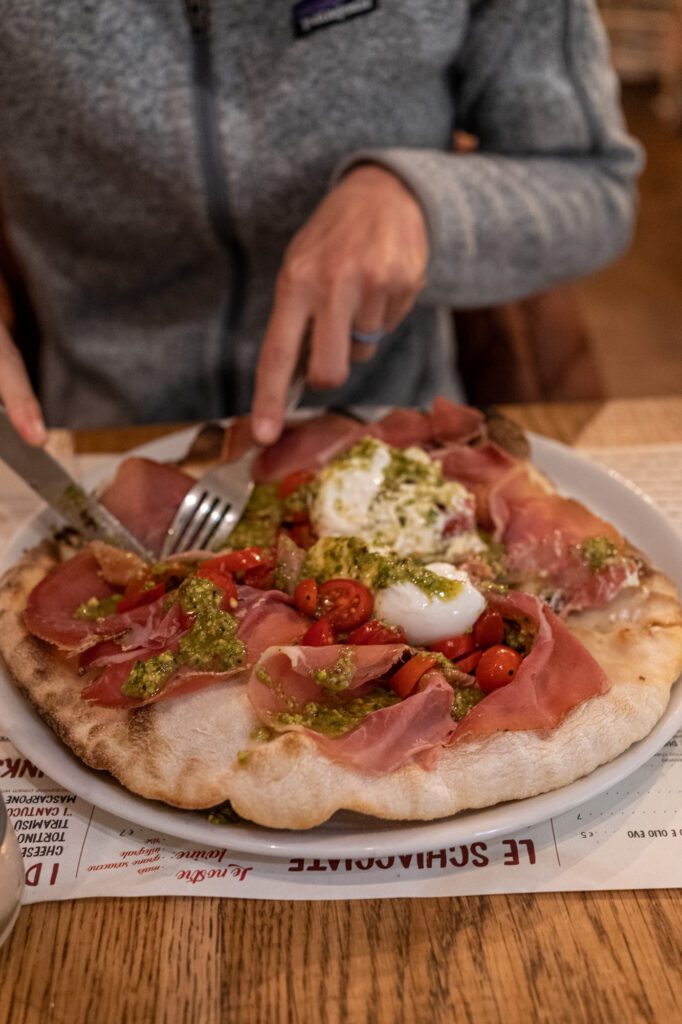
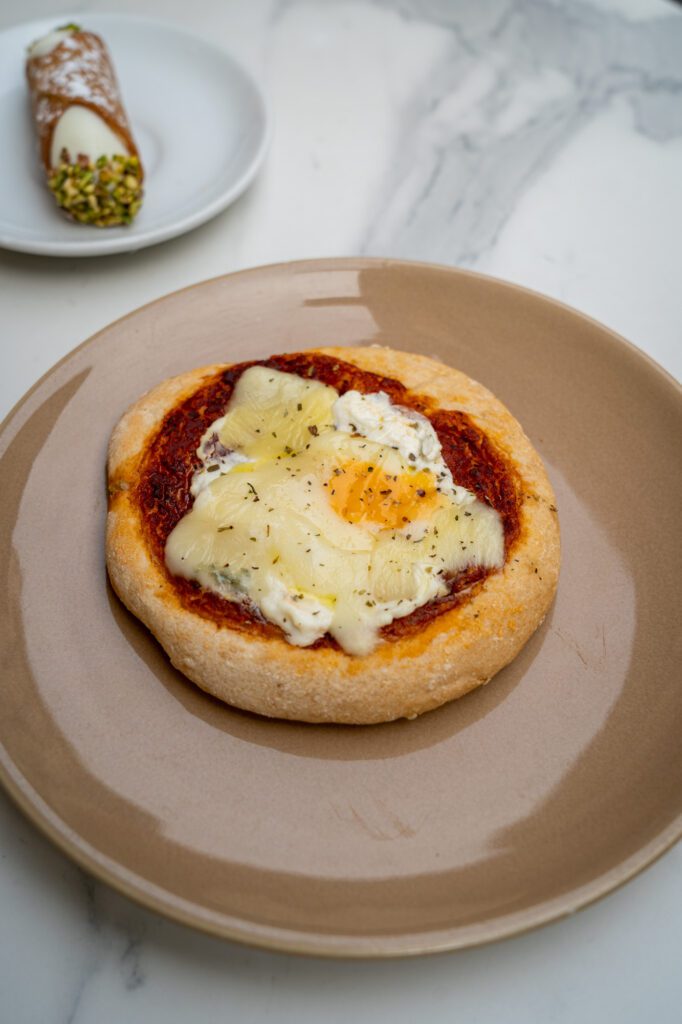
Here are a few of our best tips for traveling gluten free in Italy.
We Trust the Italian Celiac Association (and Love the App)
We’ve already sort of covered this one, but the AIC is the main difference between Italy and similar countries in Europe when it comes to Celiac friendliness.
Compare it to places like France and the United States, which are, at times, nightmarish for Celiacs.
The AIC educates restaurants and consumers about how to eat out safely with Celiac Disease. As you get further into your trip, you’ll start to notice that AIC-accredited restaurants all kind of follow the same playbook.
That comes down to the education and processes implemented based on the advice of the AIC, which you can read about here (it’s in Italian, but you can use some sort of translation app to get it into English).
They have an app (find it here) that is pretty great. Again, not the best app I’ve ever seen, but it’s functional (most of the time, anyway) and the information is invaluable.
One tip I do have is to look at the star rating in the AIC App for each restaurant you are planning to visit (more on our process in the next section).
That’s a good way to gauge what the experience is going to be like, although there’s no write ups, which makes its usefulness a little bit limited.
How to Find Safe Gluten Free Restaurants in Italy
There are essentially two apps I use to find gluten free restaurants in Italy.
Those two apps are the AIC app and Find Me Gluten Free. These are two great tools that have some level of crowd-sourced reviews from the gluten free community.
There is one big thing you need to watch out for – the reviews aren’t always 100% reliable, which is why you need to reach out to each restaurant individually (or ask when you stop in before ordering).
Here are a few tips for using FMGF:
- Filter by “Dedicated Gluten Free” first. I recommend dining in 100% gluten free places when you’re traveling with Celiac Disease, but they aren’t always plentiful. Doing this makes it so that you can find those gems and add them to your list.
- Sort by rating, but know that sometimes the top rated restaurants are not actually in the city you searched in. For example, if you look at the highest rated restaurants in San Francisco, you’ll get a bunch that are a 30+ minute drive outside the city. Just something to watch out for.
- Focus on the “% safe for Celiacs.” The star ratings are important, but I use the % who say it’s safe for Celiacs as a directional guide for whether or not they should make the list. Which leads me to my last point.
A Gluten Free Restaurant Card Can Help You Feel More Comfortable
I would like to start this section by making it clear that, while I have brought one with me on every trip to Italy, over the eight weeks I’ve spent in Italy over the past few years, I have used my gluten free restaurant card in Italian (from Legal Nomads, of course!) exactly zero times.
That’s partially because I learned Italian – specifically how to communicate my food needs in Italian – but also because most of the people working in the service industry in major Italian cities speak at least a little bit of English (this is less true in less popular destinations, like Sicily).
However, you’ll notice that despite speaking enough Italian to get by and going to cities with plenty of tourists, I still buy one and bring it with me, just in case.
It’s kind of like a safety blanket for me – if I run into a situation where communication just isn’t happening, I have a backup plan where I can pull out my printed gluten free restaurant card, and hopefully get my point across.
Now, which gluten free restaurant card you choose matters, I think.
Anyone can learn to say (or pull up on Google Translate) something to the effect of “I have Celiac Disease and I need to eat gluten free.” But 90% of the battle when you’re trying to find safe gluten free food when you’re traveling is going to be managing cross-contact with gluten, like shared fryers and pizza cutters.
Which is something that 99% of the cards out there – free and paid – don’t mention at all. Crazy!
That’s why I, personally, like the cards from Legal Nomads, which have detailed explanations of what is and is not safe, and mentions cross-contact specifically.
They’re $9, and are well worth the peace of mind, at least for me.
Some people have emailed me to tell me that the Legal Nomads card is just too long, but when we’re talking about my health, I’d much prefer over communicating and mentioning specific things I can and can’t eat (versus saying, essentially, “I need to eat gluten free thanks”).
The “Gluten Free” Beer is Made with Barley
I really can’t figure this one out. In a country (or region, since the labeling laws often come from the E.U. regulations) that does its best to protect Celiacs and give them the information they need to stay safe, they have one major blindspot: gluten free beer.
There are a bunch of gluten free beer brands in the E.U., but 99% of them are what we in the United States call “gluten reduced,” because they are brewed with barley (NOT Celiac-safe!) and then an enzyme is used to break down the gluten.
The alternative, which is what the gluten free breweries in the United States are doing, is to use naturally gluten free grains like rice, millet, and corn (among others) to brew gluten free beer.
After a conversation with an Italian beer shop owner where we could only understand roughly half of what the other person was saying, I believe the reason behind this is the fact that you cannot call a beverage in the E.U. “beer” unless it is made with barley, which he claimed was because of “the Germans,” which means that all of those naturally gluten free beers can’t be called beer in the E.U. (PS if you know more about this, I’d love to hear from you!).
Literally every single gluten free beer I came across in Italy was made with barley, and it was super disappointing when I went to a gluten free restaurant, ordered a beer, paid a ridiculous price because it was gluten free, and found out it was gluten reduced when it arrived.
Needless to say, I didn’t make that mistake twice.
Now, I don’t think this is the right forum to get into whether or not gluten-reduced beers that are brewed with barley are safe for Celiacs.
I personally do not drink gluten-reduced beers after multiple bad experiences with them, and would refer you to this guide by Gluten Free Watchdog on why they’re problematic.
The point is that if you see “gluten free beer” in Italy, you should be skeptical.
Gluten Free Wheat Starch is Fairly Common in Pizza Crusts
Another problematic ingredient! But, in my opinion, less-so than the gluten free beer example above.
In Italy, and many other E.U. countries, they use an ingredient that is essentially gluten free wheat starch, which offers some nice texture benefits when it’s used in things like pizza crust.
All of a sudden, you go from only being able to do thin crust pizzas to being able to have thick, bubbly pizza crust. MAGIC!
Admittedly, I know less about gluten free wheat starch than I do about gluten reduced beer, but I will once again refer you to Gluten Free Watchdog’s take on it (she’s so much more knowledgeable than I am on this kind of stuff) so that you can use that information to make your own decision.
However, the reason that I’m including this in its separate section is that it absolutely does matter for people with a wheat allergy!
If you are eating gluten free because you have a wheat allergy, you’ll need to ask at every restaurant, particularly pizza places.
Grocery Stores Generally Have a Separate Gluten Free Section
Just about every grocery store in Italy carries gluten free products. Which means that even in the areas where there aren’t as many gluten free restaurants, you’ll still be able to find plenty of options at the grocery store.
All you need is access to a kitchen, and you’ll be able to whip up some great meals for yourself.
The main chains that you’ll find vary by region, but the three we’ve seen the most often are CONAD (if you see their sub-brand SAPORI & DINTORNI, definitely stop in!), Pam, and Coop.
All three of them have gluten free options, but you’ll find them organized slightly differently.
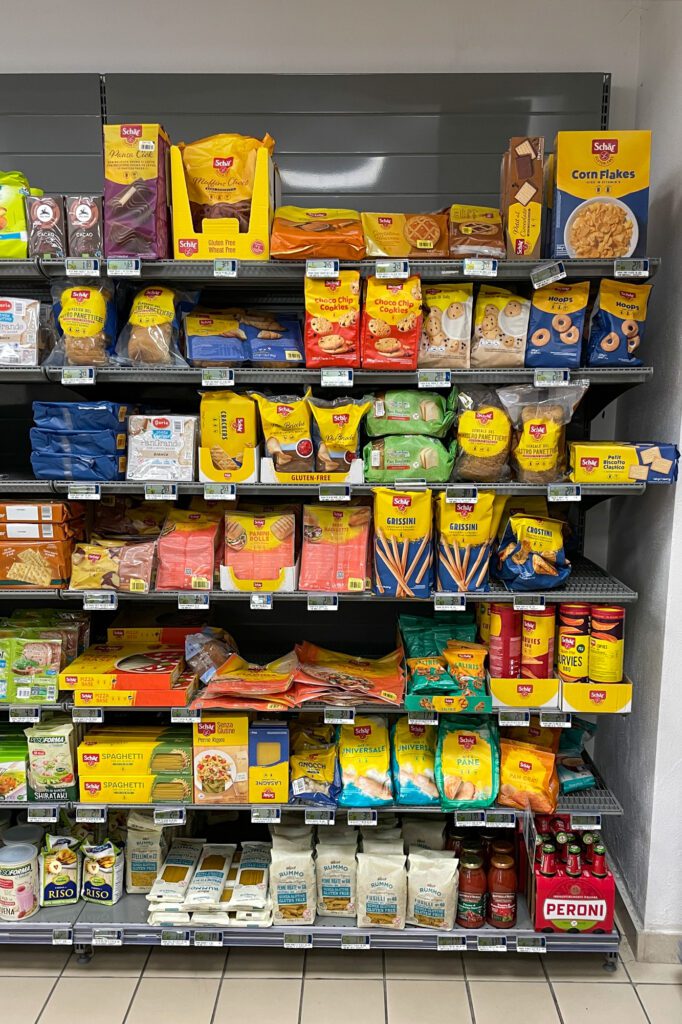
In some cases – like Conad – gluten free products are found in a dedicated aisle. In other cases – like Pam – they’re mixed in with the other products in the store.
For what it’s worth, Conad is our favorite of the three main chains, especially their specialty stores (or at least it seems that way to us) under the brand Sapori & Dintorni, which you’ll find in most of the main cities in Italy (Florence, Bologna, Milan, etc).
Our Favorite Gluten Free Brands in Italy
You’ll want to look for the words “senza glutine” on any products you’re thinking about buying (except for things like milk, cheese, and fruits and vegetables).
- Schar – Breads, crackers, crostini, sweets
- Rummio – Best gluten free pasta in Italy, we think
- Barilla – Pasta, pesto, and pasta sauce
Gluten Free Italy: Mini GF City Guides
Now that we’ve covered our processes for finding Celiac-safe gluten free restaurants while you’re in Italy, let’s get into specific recommendations for places to eat in popular Italian cities.
For most of the cities below, we have a separate, more detailed city guide with far more options. We’re just going to give you a few highlights in each place in this section, and we’ll give you the link to our full city guide (if we have one) for more information.
What Are the Best Cities for Eating Gluten Free in Italy?
Before we get into specific recommendations in various cities, let’s take a second to talk about where you’ll find the best gluten free options.
This is important if the food is part of the reason you’re visiting Italy – there are certain cities and regions where you’re going to find more gluten free options, and if you’re in it for the food, you’ll want to focus your time there.
At a high level, the big cities are going to have the best gluten free selection.
The best cities in Italy in terms of gluten free options are:
- Rome
- Florence
- Broader Tuscany
- Milan
- Bologna
The cities and regions where you’re going to find fewer options are:
- Venice (we’re not sure why this is – I guess maybe it’s not a huge city, and real estate is expensive?)
- Cinque Terre and the Amalfi Coast
- Sicily
- Southern Italy
That doesn’t mean you shouldn’t visit those places, but it does mean that you should know going in that you aren’t going to find the same level of gluten free options as, say, Rome.
Now, here are our mini-guides to Rome, Florence, Bologna (an underrated destination!), and Milan.
Rome
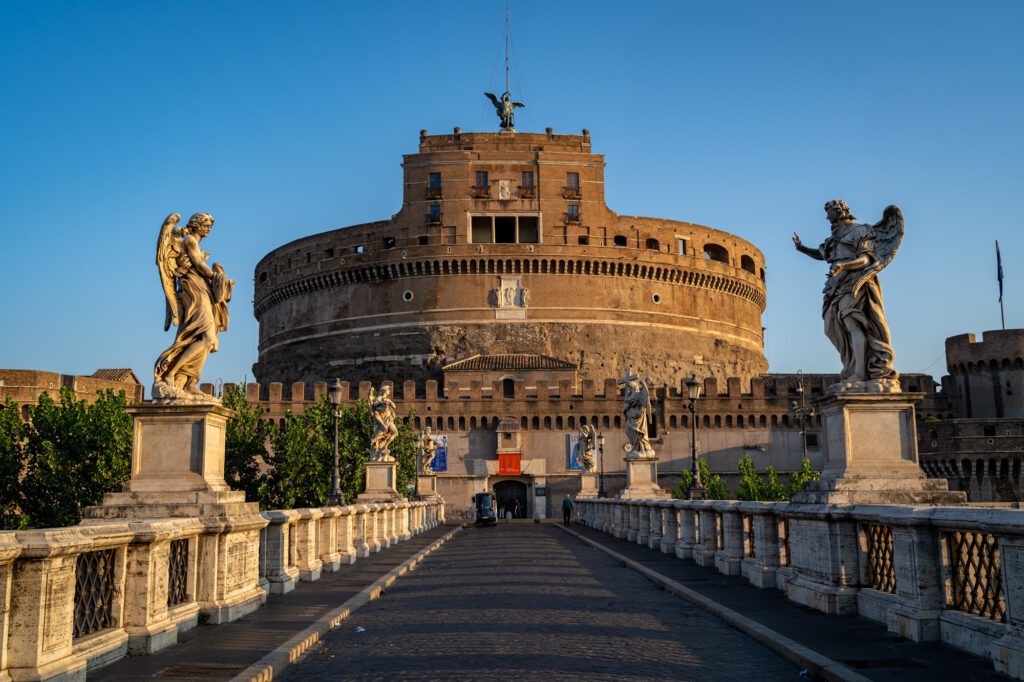
As the biggest city in Italy, it’s really no surprise that Rome has a cornucopia of gluten free restaurants and bakeries to choose from.
There are far, far too many to list here, so we’re going to cover our top three and point you to our guide to gluten free Rome for more.
Fatamorgana & Grom for Gelato: There are two 100% gluten free gelato chains that have multiple locations in Rome, and we’d strongly encourage you to go ahead and try both and decide which one you like better. Both are excellent, but we think the quality of the basic flavors at Grom is better, but the selection of interesting flavor combinations is better at Fatamorgana.
Le Altre Farine Del Mulino: It’s a little bit out of the way, but this is our favorite gluten free bakery in Rome. We went out of our way multiple times for those sweet, delicious cornetti con pistachio. YUM. La Pasticciera (which is near Termini station) is a close second, but the selection isn’t quite as good.
Pantha Rei: Our favorite gluten free restaurant in Rome! It’s right near the Pantheon in the heart of the Centro Storico, and they have a lovely little outdoor terrace which is perfect for dinner on a warm evening in Rome. Not dedicated, but AIC-accredited and all the processes – like golden coke bottles on the table to signify the gluten free person – are there.


For more, read our guide to the best gluten free restaurants in Rome.
Florence
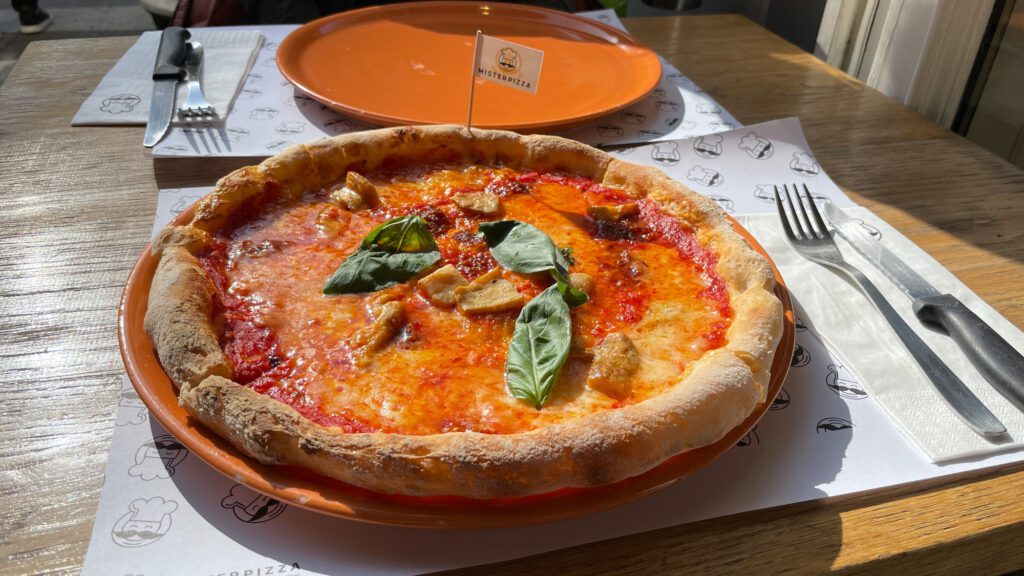
Florence is another great gluten free city, and there are tons and tons of options, from pizza (there are two legit good pizza spots), to Tuscan cuisine, and more.
Sgrano: This place is incredible. It’s on a street right outside of the exit for the Uffizi Gallery known for these massive sandwiches called schiacciata (kind of like focaccia, but different). There are quite literally hundreds of people lining up around lunchtime for the famous one on the street, while a little bit further east you’ll find Sgrano on the corner, which is 100% gluten free and makes the same sandwich gluten free. Highly, highly recommend! They have a new osteria nearby that serves up traditional Tuscan food too, and it’s also 100% gluten free.
Mister Pizza: This was our favorite of the gluten free pizza spots in Florence, though Ciro & Sons gets more fanfare. Friendly staff, separate oven, and good pizza.
Bottega Artigiana del Gusto: It’s a little bit out of the way in terms of the main tourist sights, but this bakery across the river and east of Piazza Michelangelo is worth the short bus ride to get to. You’ll be able to have all sorts of pastries, pizza, sandwiches, cookies, tarts, and more. Plus, they have a gluten free grocery section in the back if you’re looking to pick up some things to cook.
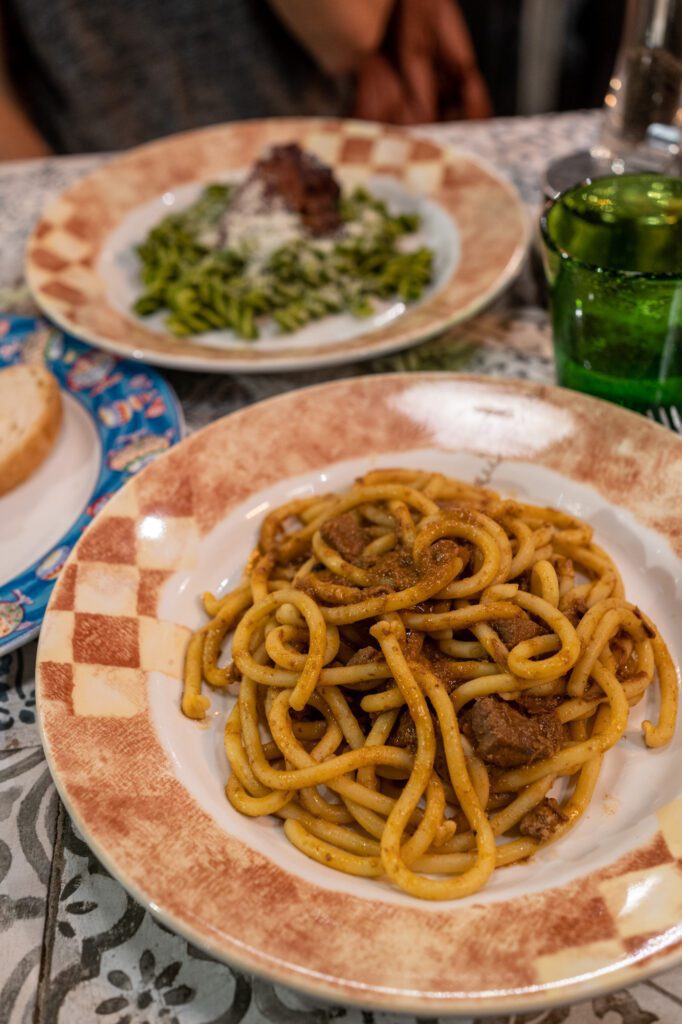
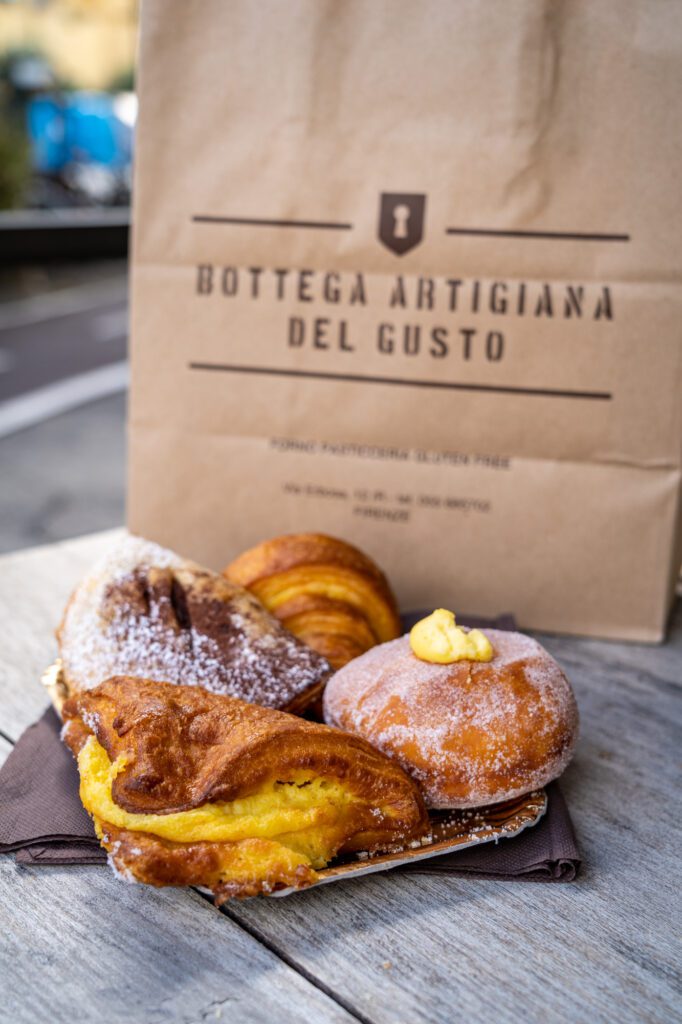
For more, read our guide to the best gluten free restaurants in Florence.
Milan
Milan, which is the financial center of northern Italy, is another great gluten free destination (and, really, a great destination aside from the gluten free food). Here are our three favorite spots in Milan – one restaurant, one bakery, and one gelato shop.
Out-of-the-Box Gelato: Excellent gelato, 100% gluten free, and lots of great plant-based options.
PanPerMe: Great gluten free bakery on the eastern side of the city. Good cornetti and other pastries for breakfast, savory options and breads for lunch, and fancier cakes and tarts if you’re looking for a special treat.
Bistrò: One of the only 100% gluten free restaurants in Milan, and a great place to go to try osso bucco, Milan’s specialty. They also have a great gluten free pastry selection, which is all made in-house.
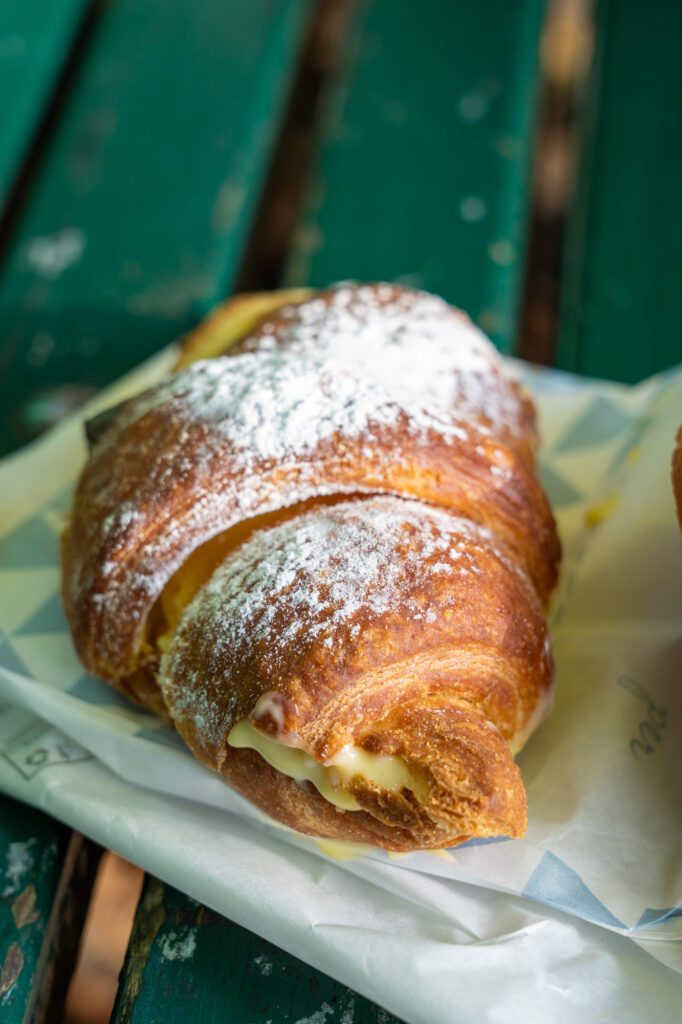
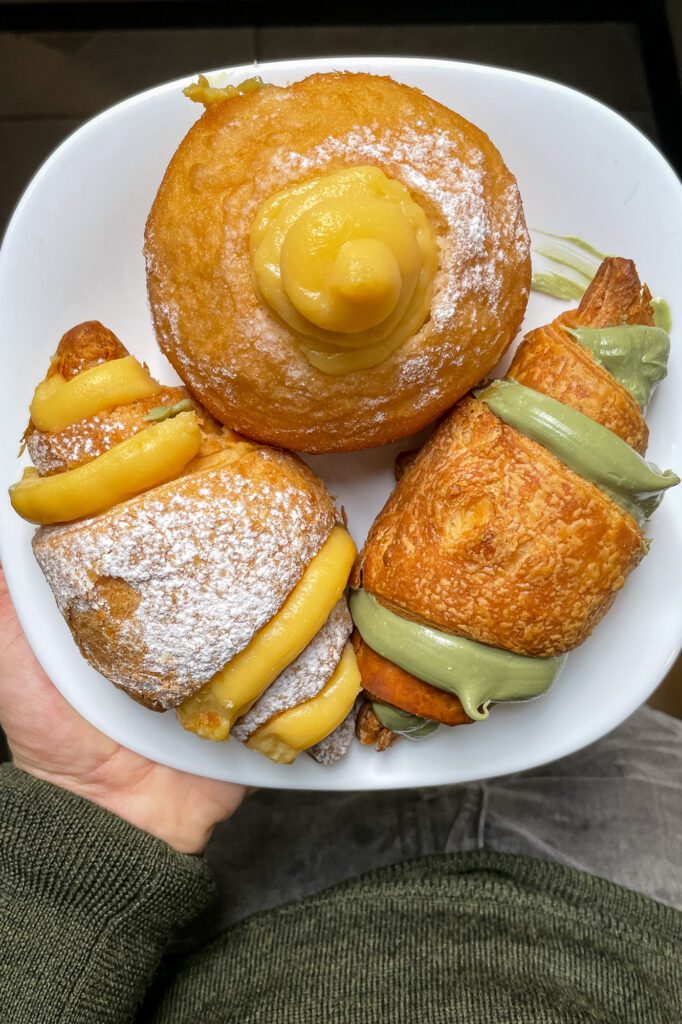
For more, read our guide to the best gluten free restaurants in Milan.
Bologna
Spoiler: We think Bologna is the most underrated city in Italy.
We only visited it because we had friends who relocated there, but after returning for a week the next year, we’re pretty sure we’d absolutely move there too, if the chance arose.
The key is that Bologna is the best food city in Italy. The region that Bologna is in – Emilia-Romagna – produces all sorts of Italian delicacies like bolognese, prosciutto di parma, parmesan-reggiano cheese, and balsamic vinegar di Modena.
La Capriata: This place has taken the title of “best meal in Italy” both on our six week trip to Italy in 2021, and a more recent two week trip with my family that took us to Tuscany and Emilia-Romagna. It’s a great place to try specialties from Emilia-Romagna (the best food region in Italy for me) like gnocco fritto (fried bread), tagliatelle al ragù, tortelloni, and lasagne verdi (among other things).
La Spica Amica: A short walk from Bologna’s center, this gluten free bakery is in a residential area. You’ll find fresh pasta, including tortelloni and tagliatelle, along with bread, pastries, and plenty of other goodies. It’s 100% gluten free, and is a good place to pick up some gluten free cornetti (Italian croissants, essentially) for breakfast.
La Trattoria Mercato Vecchio: This place is 100% gluten free, and is near Bolognina, which is north of the train station in Bologna. It’s good (though we thought the food at La Capriata was better, if we’re being honest), and the benefit is that you can order everything on the menu (and they have gluten free pizza at dinnertime).
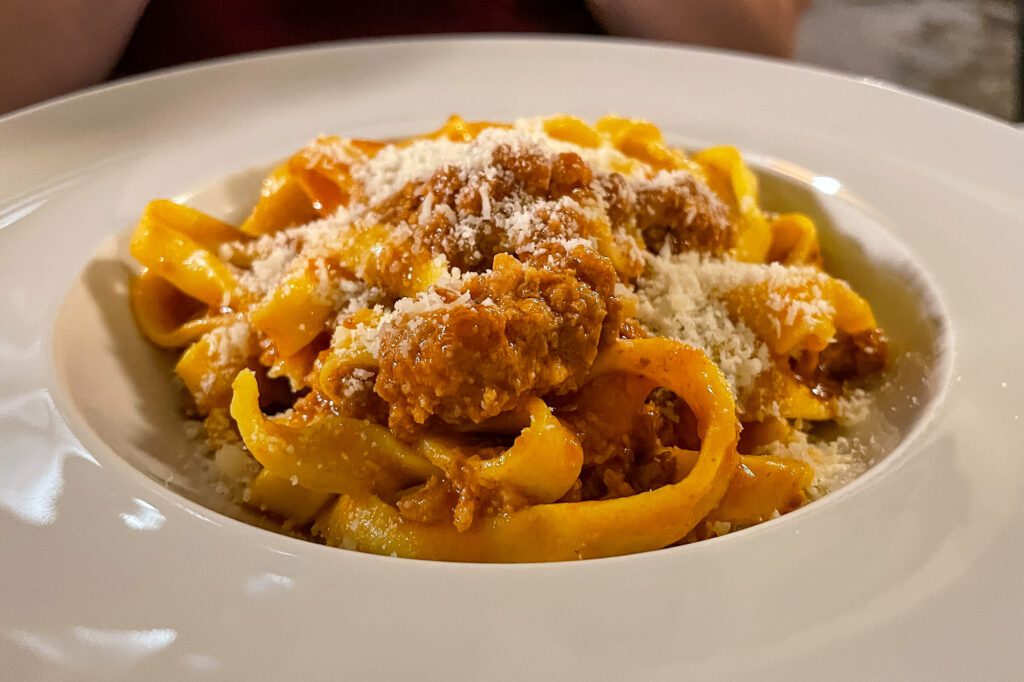
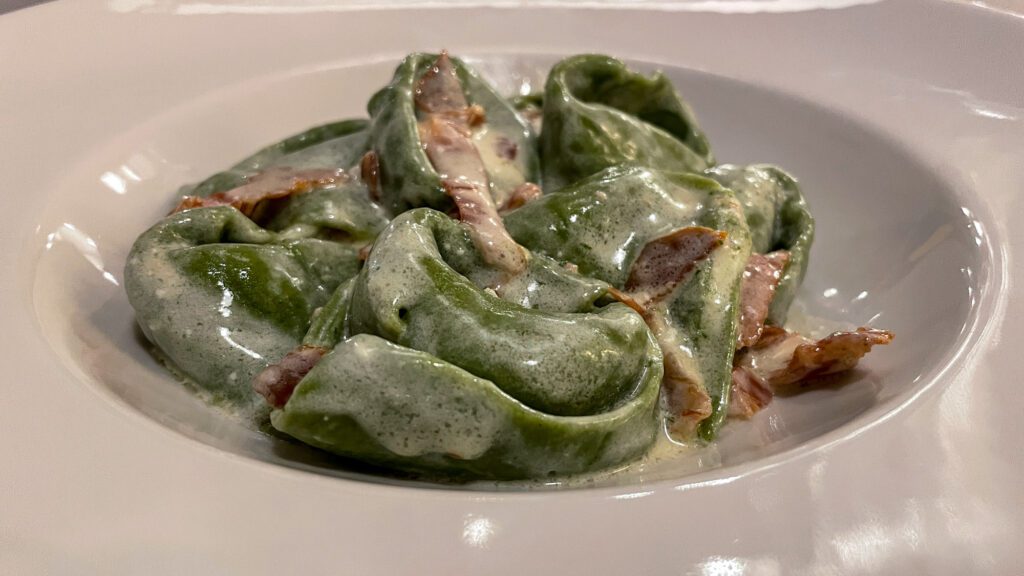
Read more: How to Find Gluten Free Restaurants Around the World
Planning a trip to Italy? We’d love to help!
Here are our other Italy travel guides to help you plan an incredible trip (even if you have to eat gluten free!).
If there’s no link below, it means we’re still working on it – long, in-depth guides take time! We’re working on it, though, we promise.
If you’re planning a trip and you’re not sure where to start, your first stop should probably be one of our detailed itineraries.
We have a two week Italy itinerary that blends the main cities with some less-visited cities that we love (BOLOGNA!), a guide to spending 10 days in Italy that focuses mostly on the highlights, and a whirlwind guide to spending one week in Italy that features the Rome – Florence – Venice highlight circuit.
We also have a guide covering important tips for traveling to Italy for the first time, which is a collection of things we’ve learned over the course of our time in Italy that will help you have a smoother, more immersive trip.
Here are more specific guides to the main cities in Italy.
Rome
- What to do in Rome (as a First Timer)
- How to Plan an Amazing 4 Day Rome Itinerary
- Where to Stay in Rome: A Complete Guide for First Timers
- 26 Things to Know Before You Visit Rome
- Gluten Free Rome: A Complete Guide to GF Restaurants + Bakeries
- Where to Find the Best Specialty Coffee in Rome
Florence
- What to do in Florence (as a First Timer)
- How to Plan an Amazing Florence Itinerary (3 Days)
- Where to Stay in Florence: A Complete Guide for First Timers
- Gluten Free Florence: A Complete Guide to GF Restaurants + Bakeries
- Where to Find the Best Specialty Coffee in Florence (for Coffee Nerds)
- The Best Day Trips from Florence (Complete Planning Guide)
Venice
- A Perfect 3 Day Venice Itinerary (for First Timers)
- Exactly What to Do in Venice (As a First Timer)
- Where to Stay in Venice: A Complete Guide
- Gluten Free Venice: A Complete Guide (for Foodies)
Bologna
- What to do in Bologna (as a First Timer)
- How to Spend One Incredible Day in Bologna
- How to Plan an Amazing Bologna Itinerary (2 Days)
- Where to Stay in Bologna: A Complete Guide for First Timers
Cinque Terre
- What to do in Cinque Terre (as a First Timer)
- How to Plan an Amazing Cinque Terre Itinerary (2 Days)
- Where to Stay in Cinque Terre: A Complete Guide for First Timers
Milan
- What to do in Milan (as a First Timer)
- How to Plan an Amazing Milan Itinerary (2 Days)
- Where to Stay in Milan: A Complete Guide for First Timers
- Gluten Free Milan: A Complete Guide to GF Restaurants + Bakeries
The Rest of Italy

I have always wanted to visit Italy, but as a Celiac who’s been gluten free for over 20 years, I never thought Italy would be a place I could find much to eat. I thought if I ever went there I would be sad the whole time, watching everyone else indulging in all the delicious food I couldn’t have, while snacking on the GF tidbits I brought with me from home.
I am so happy to hear that at least in the bigger cities there are lots of GF options, and even some 100% GF restaurants to choose from! Hmmm, maybe I’ll be planning my next trip soon…
Hey Christine! I thought the same, but it turns out that Italy is one of the more accommodating places to visit with Celiac Disease, at least in Europe. That’s especially true in the bigger cities, like you said. You certainly won’t go hungry in Rome, Florence, Milan, etc etc. Having traveled extensively through Europe, I’d put Italy near the top of the list (along with Spain). Germany, Belgium, and France, on the other hand, go straight to the bottom.